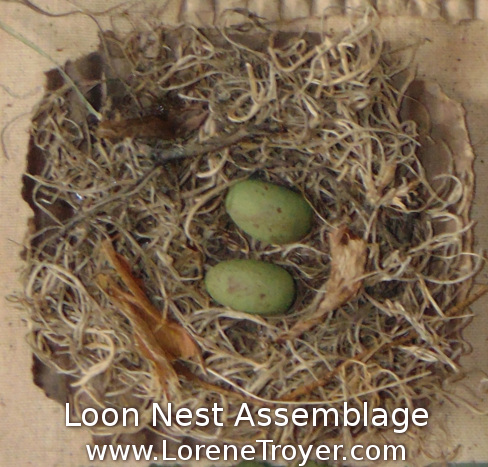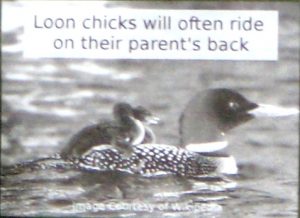This is part 3 of the Loon Art Assemblage series.
To make the loon eggs, I found some homemade clay recipes online. The first recipe I tried didn’t work; the eggs got “bumpy” as they dried. I used a baking soda recipe on my second try. It was better than the first recipe but the clay was very soft. As the eggs were drying on the counter, I could just see one of my kids coming by and poking it with their finger, “What’s this, mom?”
After the eggs were dry, I used some fine grit sandpaper to smooth them out and painted them with a mixture of green and brown acrylic paints to make the olive color.
The nest was made from Spanish moss. I added a few small twigs, some leaves and grass- just like a real loon nest, maybe… maybe not.

I spent considerable time looking for an image of a loon with a chick on it’s back. It needed to be free of a copyright and had to be big enough to print. I finally found one on Wikipedia. I edited it in Gimp, desaturating, increasing the contrast, and adding more blur to the background.

While I was looking a copyright free image of the common loon, I found a range map that showed where the loons were most likely to be found during the summer and winter seasons. I thought this might be a good addition to my assemblage so I printed it out, sending my 12 year old beagle scurrying for cover. (She doesn’t like the loud noises my printer makes.)
Loons eat gravel from the bottom of lakes to aid their digestion. I thought this tidbit could be useful, so I went outside and collected bits of gravel from the driveway. Oh the things I do for art! I glued the gravel onto a piece of cardboard and printed out the words to go with it. Read all the posts in this series, Common Loon Assemblage Art
